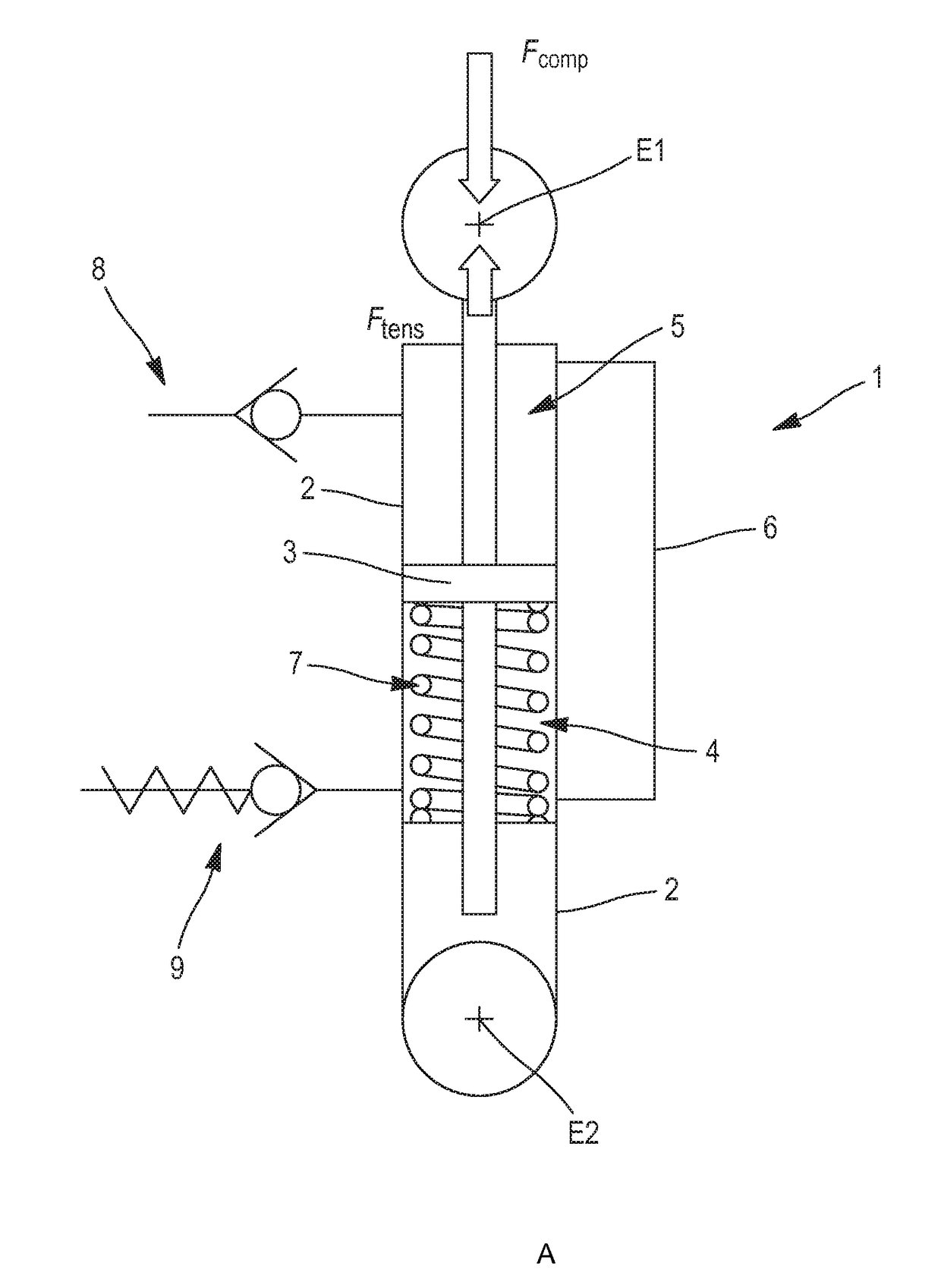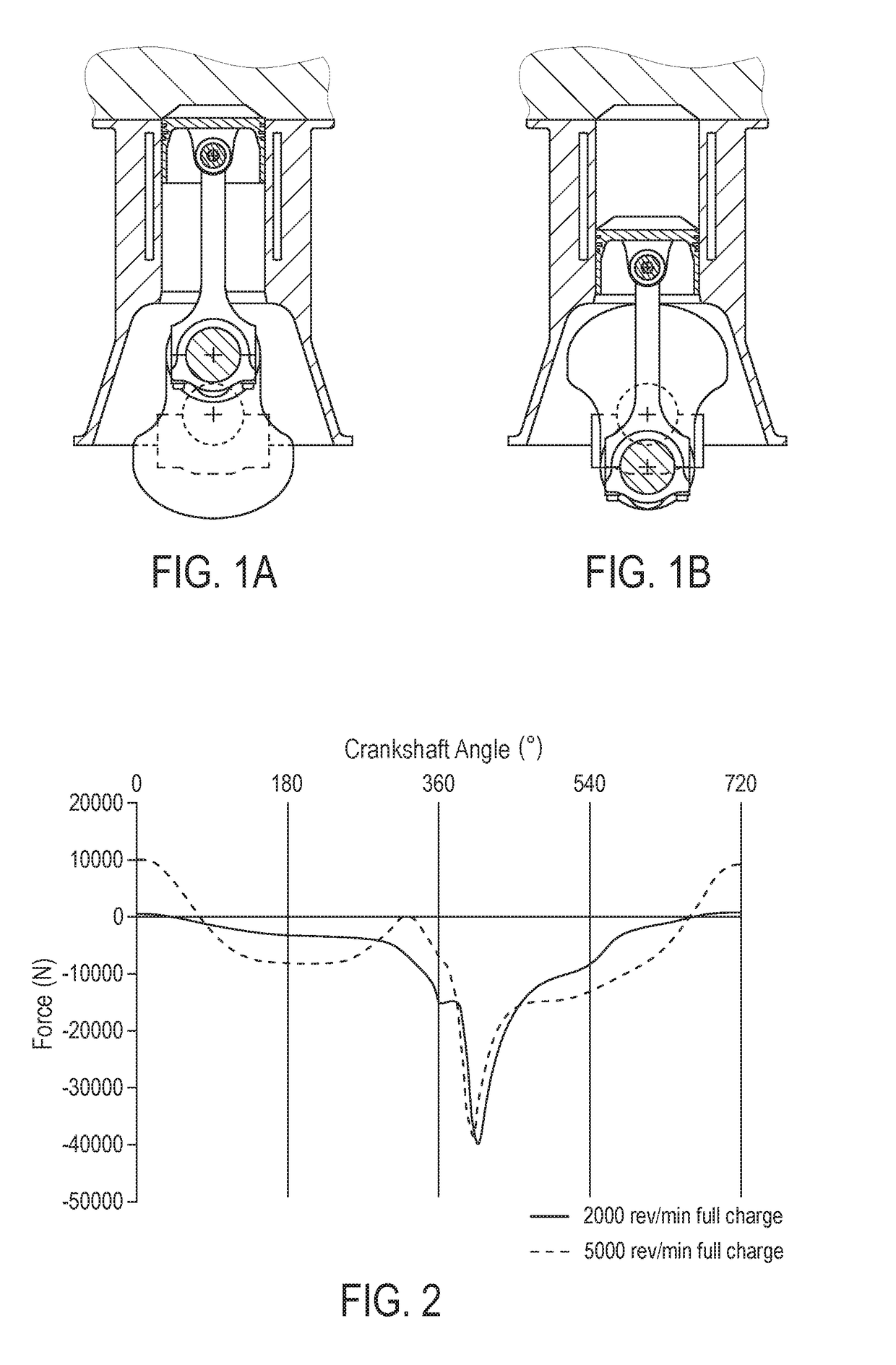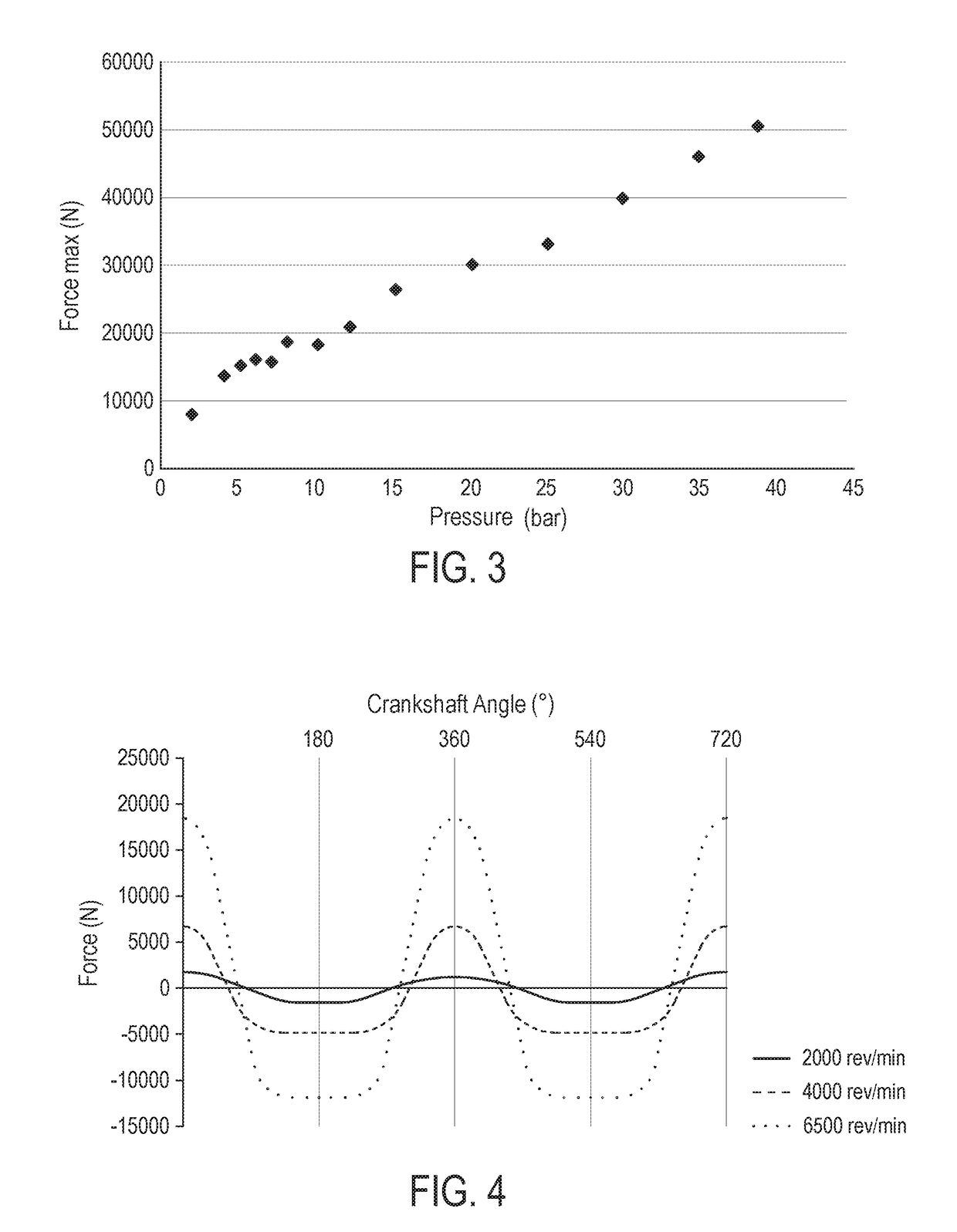Variable compression ratio engine
- Summary
- Abstract
- Description
- Claims
- Application Information
AI Technical Summary
Benefits of technology
Problems solved by technology
Method used
Image
Examples
example 1
Self-Contained Device Built into the Rod of a Conventional Engine
[0142]According to the first embodiment, the self-contained device is built into the rod of a conventional engine as shown in FIGS. 1A and 1B, with the following characteristics:[0143]Combustion piston diameter: 75 mm;[0144]Stroke 84 mm;[0145]Three-cylinder forming 1113 cm̂3 of capacity;[0146]Maximum load: 25 bars MEP (mean effective pressure) for a maximum combustion pressure of 130b;
[0147]A rod corresponding to this first example is shown in FIG. 9.
[0148]In this example, the big end of the rod is shaped to form the cylinder 2 in which the piston 3, which is attached to the rod, through the stem 9, runs. The opening of the cylinder 2 is closed by the cover 13, which can be screwed to the cylinder 2. The piston 3 thus defines in the cylinder 2 the high-pressure chamber 4 and the low-pressure chamber 5. The center-to-center spacing of the rod is 150 mm, when it is in its nominal position, and 146 mm when compressed and...
example 2a
Self-Contained Device Built Into a Control Member of the Variable Compression Ratio Engine
[0156]FIG. 11 shows an overall diagrammatic section of a variable compression ratio engine. From EP1407125 certain mobile members that constitute such an engine are known:[0157]a combustion engine, able to play in a cylinder of the engine and attached to a transmission organ;[0158]a roller that moves along the engine crankcase, which guides the translation movement of the transmission member.[0159]a sprocket wheel that interacting with the first rack and pinion of the transmission member and ensure transmission of movement between the combustion piston and the engine crankshaft; and[0160]a connecting rod interacting, at the first end, with the sprocket wheel and in the second end with the crankshaft.
[0161]A control element, that equally cooperates with the wheel, enables change of the vertical position of the wheel in the engine, and adjustment of the top dead center of the piston stroke in the...
example 2b
Self-Contained Device Built Into a Command Member of the Variable Compression Ratio Engine
[0170]FIG. 12 shows a diagram of an overall section of a variable compression ratio engine. Components of such an engine are known from Document DE102010019756. They include the following in the crankcase:[0171]a combustion piston, capable of in the cylinder and attached to the connecting rod;[0172]a transmission structure attached to the rod and ensuring transmission of movement between the combustion piston and one crankshaft of the engine; and[0173]A command structure interacting with the transmission organ as well and enabling adjustment of the top dead center of the piston stroke in the cylinder. Thus is an engine created with the possibility of varying its compression ratio.
[0174]In this type of engine, combustion efforts apply to the combustion piston and traction forces transmitted by the crankshaft are both transmitted through the transmission member to the command member.
[0175]The eng...
PUM
 Login to View More
Login to View More Abstract
Description
Claims
Application Information
 Login to View More
Login to View More - R&D
- Intellectual Property
- Life Sciences
- Materials
- Tech Scout
- Unparalleled Data Quality
- Higher Quality Content
- 60% Fewer Hallucinations
Browse by: Latest US Patents, China's latest patents, Technical Efficacy Thesaurus, Application Domain, Technology Topic, Popular Technical Reports.
© 2025 PatSnap. All rights reserved.Legal|Privacy policy|Modern Slavery Act Transparency Statement|Sitemap|About US| Contact US: help@patsnap.com



